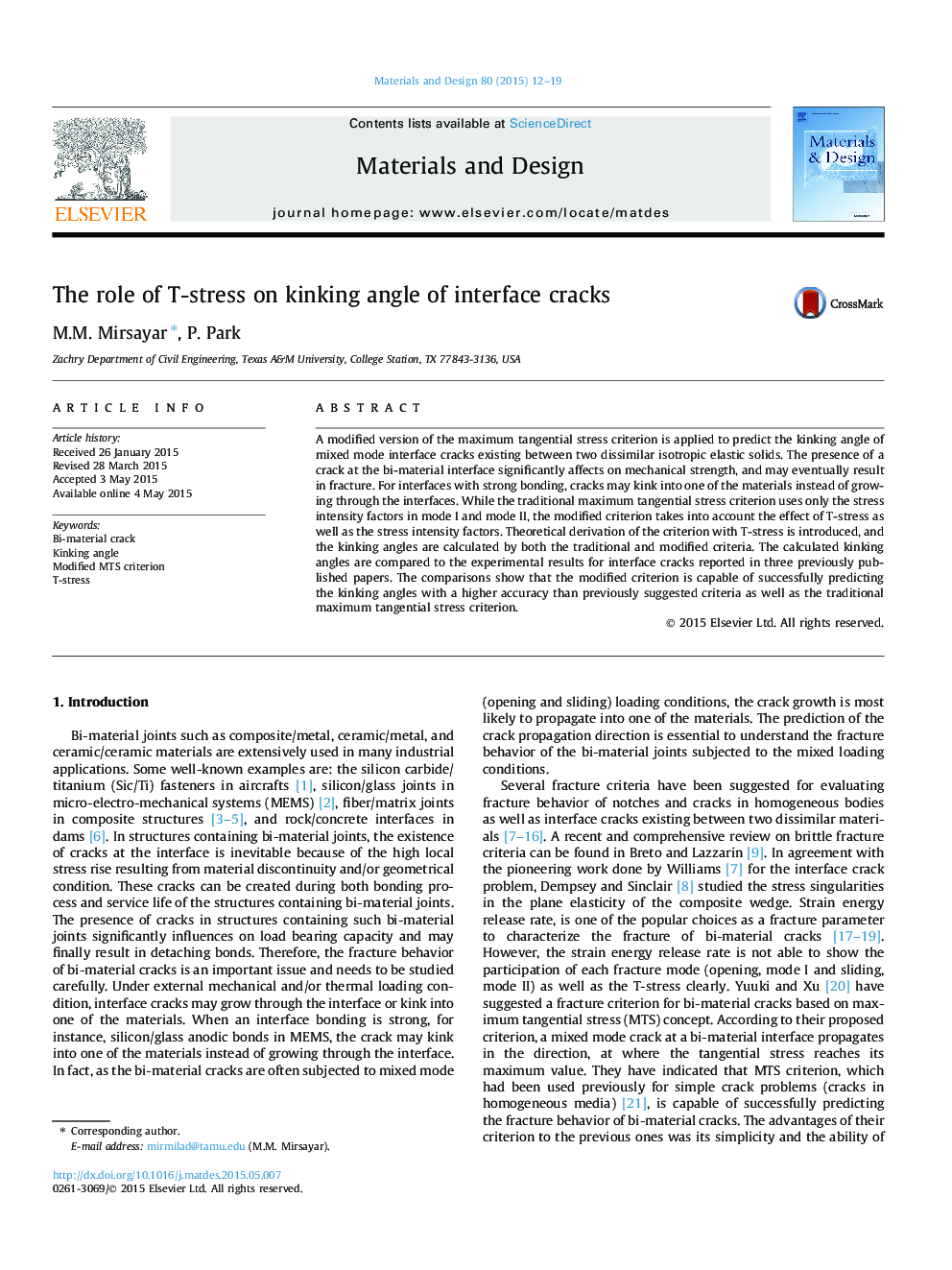| Article ID | Journal | Published Year | Pages | File Type |
|---|---|---|---|---|
| 828524 | Materials & Design (1980-2015) | 2015 | 8 Pages |
•Effect of T-stress on kinking angle in interface cracks is studied.•MMTS criterion is applied to predict kinking angle in interface cracks.•The MMTS criterion is examined and discussed using various existing test results.•MMTS criterion predicts kinking angle better than traditional criteria.
A modified version of the maximum tangential stress criterion is applied to predict the kinking angle of mixed mode interface cracks existing between two dissimilar isotropic elastic solids. The presence of a crack at the bi-material interface significantly affects on mechanical strength, and may eventually result in fracture. For interfaces with strong bonding, cracks may kink into one of the materials instead of growing through the interfaces. While the traditional maximum tangential stress criterion uses only the stress intensity factors in mode I and mode II, the modified criterion takes into account the effect of T-stress as well as the stress intensity factors. Theoretical derivation of the criterion with T-stress is introduced, and the kinking angles are calculated by both the traditional and modified criteria. The calculated kinking angles are compared to the experimental results for interface cracks reported in three previously published papers. The comparisons show that the modified criterion is capable of successfully predicting the kinking angles with a higher accuracy than previously suggested criteria as well as the traditional maximum tangential stress criterion.
Graphical abstractFigure optionsDownload full-size imageDownload as PowerPoint slide
